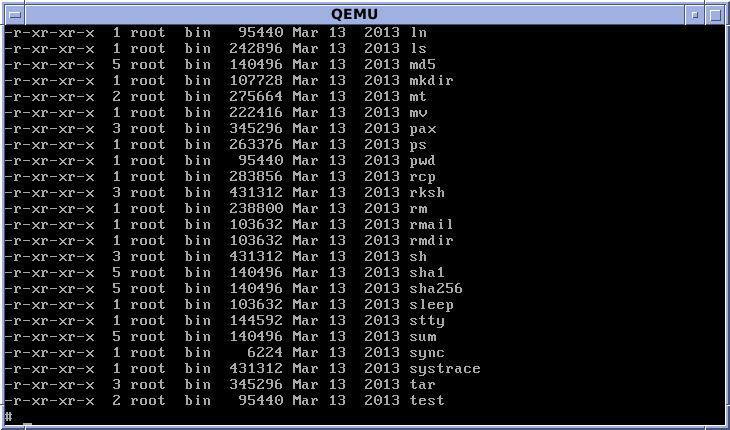 | ||
In computing, ls is a command to list files in Unix and Unix-like operating systems. ls is specified by POSIX and the Single UNIX Specification. When invoked without any arguments, ls lists the files in the current working directory.
Contents
History
An ls utility appeared in the original version of AT&T UNIX, the name inherited from a similar command in Multics also named 'ls' - short for the word "list".
Today, the two popular versions of ls are the one provided with the GNU coreutils package, and that released by various BSD variants. Both are free software and open source, and have only minor syntax differences.
Behavior
Unix and Unix-like operating systems maintain the idea of a current working directory, that is, where one is currently positioned in the hierarchy of directories. When invoked without any arguments, ls lists the files in the current working directory - but if another directory is specified, then ls will list the files there, and in fact the user may specify any list of files and directories to be listed.
Files whose names start with "." are not listed, unless the -a flag is specified, the -A flag is specified, or the files are specified explicitly.
Without options, ls displays files in a bare format. This bare format however makes it difficult to establish the type, permissions, and size of the files. The most common options to reveal this information or change the list of files are:
It's normally possible to highlight different types of files with different colors, instead of with characters as -F would, but this is an area where the two main ls versions differ:
When the option to use color to indicate file types is selected, the output might look like:
brw-r--r-- 1 unixguy staff 64, 64 Jan 27 05:52 block crw-r--r-- 1 unixguy staff 64, 255 Jan 26 13:57 character -rw-r--r-- 1 unixguy staff 290 Jan 26 14:08 compressed.gz -rw-r--r-- 1 unixguy staff 331836 Jan 26 14:06 data.ppm drwxrwxr-x 2 unixguy staff 48 Jan 26 11:28 directory -rwxrwxr-x 1 unixguy staff 29 Jan 26 14:03 executable prw-r--r-- 1 unixguy staff 0 Jan 26 11:50 fifo srw-rw-rw- 1 unixguy staff 0 Jan 26 12:00 socket lrwxrwxrwx 1 unixguy staff 3 Jan 26 11:44 link -> dir -rw-rw---- 1 unixguy staff 217 Jan 26 14:08 regularfileSample usage
The following example demonstrates the output of the ls command given two different arguments (pwd is a command that shows the present working directory, or in other words, the folder you are currently in):
In this example, the user fred has a directory named drafts, a regular file called edition-32, and an executable named edit in his home directory. ls uses Unix file permission notation to indicate which users or groups are allowed to access each file or directory.
This means that the letters behind the file descriptor (d), which indicates a folder or 'directory', list three characters to indicate permissions for the owner of 'drafts' (rwx), then the group to which the file belongs (r--), and the rights of others (r--).
'drafts' is a directory (d), the owner of which has the right to read (r) write (w) and execute (x): rwx, group members have (r--), meaning read only, and others have (r--), meaning read only access.
